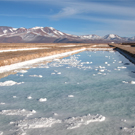Technical Session:
Surface Mine Geotech: Mineral Economics, Pit to port, Surface Mine Geotech | Open Pit Slope Stability Evaluation for Mine Closure: A Canadian Case Study Perspective
Operating open pits are exposed to geotechnical stability risk throughout the life of mine. These risks are considered part of normal operating conditions and are managed by mining teams as predicted or observed. Following the completion of mining, stability risks continue to exist as pit slopes can deteriorate and exhibit progressive failure mechanisms. In the long term, these progressive failure mechanisms can impact existing or planned mine infrastructure that is needed for achieve mine closure objectives (i.e. water treatments infrastructure, division channels, waste rock dumps, tailings facilities).
This paper presents a Canadian perspective for open pit closure as it applies to a case study at the Faro Mine Operations, a former lead-zinc open pit located in Yukon Territory, Canada. International, federal and/or provincial guidance for evaluating post-operational pit slope stability conditions are summarized.
The case study demonstrates geotechnical stability evaluation of a weak rock slope that has exhibited deterioration during and following excavation. The pit slope is located directly below a new permanent diversion channel that is required to convey water around the mine complex and be positioned outside of the potential long-term break-back. The study summarizes field investigation and monitoring techniques, stability evaluation approaches and industry recognized geotechnical acceptance criteria. The paper examines the historical performance as it applies to the expected long-term stability condition and more recently collected data, such as subsurface instrumentation and laboratory testing. Additionally, the paper describes the development of 3D geological/structural geology models along with several long-term stability scenarios based on the deposit characteristics.



